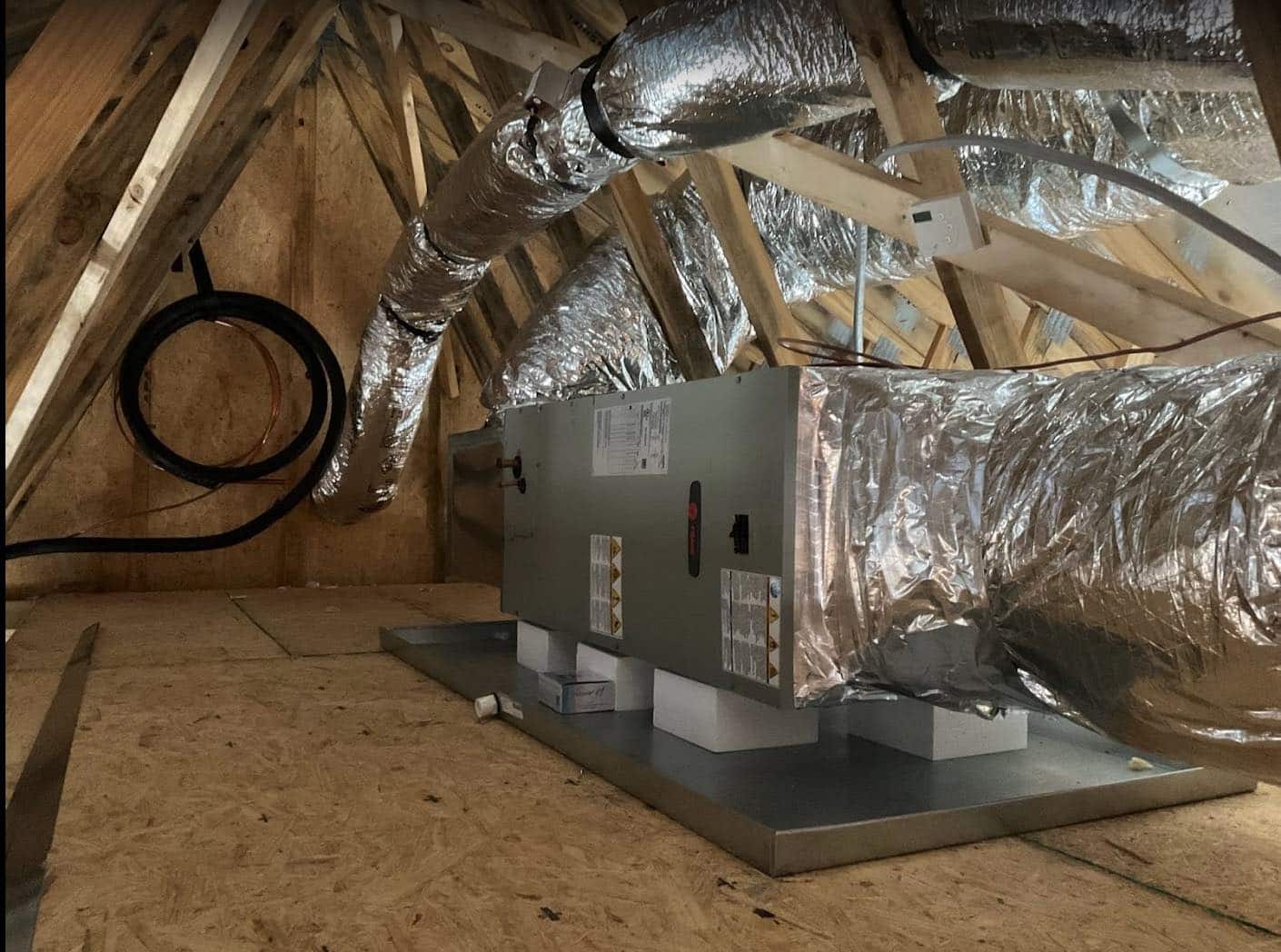
The ductwork type installed in your home impacts indoor comfort, as well as the energy efficiency and monthly costs of air conditioning and heating. An average residential home includes anywhere from 30 to 90 linear feet of ductwork, which is installed in the attic or craw space of the home. The ductwork is divided into two separate systems: supply ducts conveying cooled and heated air into rooms, and return ducts that pull air out of rooms and convey it back to the air conditioner or furnace.
A residential ductwork type usually comes in three varieties:
- Sheet metal. The most common and durable ducts. The smooth inner surface maximizes airflow. With proper maintenance and inspections, sheet metal retains airflow efficiently. It’s generally also the most expensive duct option.
- Fiberboard. Composed of fiberglass strands bonded together by epoxy into flat boards, they are made into square or rectangular ducts. Usually covered by an external foil-insulation layer, fiberboard retains airflow temperature well. It’s also readily cut into any length during installation. The interior surface, however, is somewhat rough and may accumulate dust and dirt.
- Flex ducts. Composed of flexible metal coils covered with a skin of thick plastic, it can be quickly bent or compressed to fit any installation requirement.
When Good Ducts Go Bad
Leaky ducts can be the source of significant energy costs if cooled or heated air is lost. According to the EPA, a typical residence may lose between 20% and 30% of conditioned air due to ductwork leakage. This can cause higher monthly energy bills, as well as imposing excessive wear and tear on HVAC components, which run longer cycles to compensate for leakage. Professional duct inspection and repair — including a pressure test to quantify the extent of air loss from ducts — is vital to maintain maximum system effectiveness and efficiency.
Is the ductwork type — as well as its installed condition — optimum for your home’s comfort and efficiency? Ask the pros at Jackson & Sons for more information about which ductwork type is best for your home.

